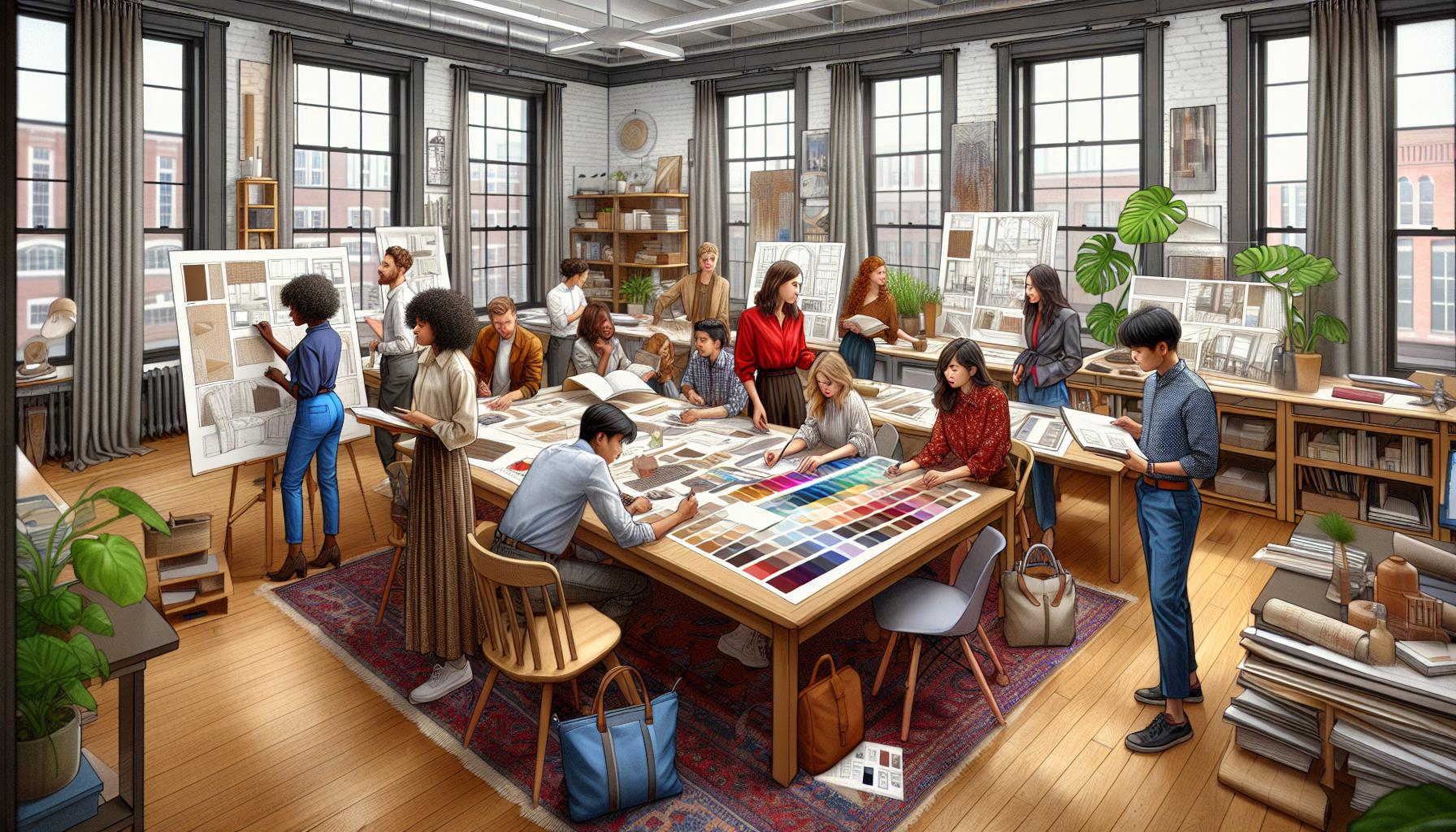Interior design is more than just arranging furniture; it’s about creating spaces that enhance functionality and aesthetics. As the demand for skilled interior designers continues to grow, understanding the education requirements becomes essential for aspiring professionals. With a blend of creativity and technical knowledge, a solid educational foundation paves the way for a successful career in this dynamic field.
From formal degrees to certifications, various pathways exist for those looking to break into interior design. Each option offers unique insights into design principles, color theory, and spatial planning. By exploring these educational requirements, individuals can better prepare themselves to meet industry standards and excel in their future careers.
Key Takeaways
- Diverse Educational Pathways: Aspiring interior designers can choose from various educational options, including associate, bachelor’s, master’s degrees, and certificate programs, tailored to different career goals.
- Importance of Accreditation: Graduating from an accredited program, such as those recognized by the Council for Interior Design Accreditation (CIDA), enhances employability and qualifies individuals for certification exams like the NCIDQ.
- Value of Certification: Obtaining certifications, such as NCIDQ and LEED, not only boosts a designer’s credibility but also opens up additional job opportunities and indicates commitment to professional standards.
- Practical Experience: Internships and externships are essential for gaining real-world experience, building a portfolio, and establishing industry connections that may lead to future employment.
- Continuous Learning: Ongoing education is crucial in interior design to keep up with new trends and technologies, encouraging professionals to pursue workshops, courses, and conferences regularly.
- Essential Skills: Interior design education provides critical skills in design principles, technical proficiency in CAD and drafting, and knowledge of building codes, preparing graduates for various design challenges.
Interior Design Education Requirements
Interior design education covers a range of crucial topics, equipping students with the skills needed to excel in the field. Coursework typically includes design principles, color theory, spatial planning, drafting techniques, and architectural history.
Educational Pathways
Aspiring interior designers can choose from several educational pathways:
- Associate Degree: Provides foundational knowledge in design basics. Credits may transfer to a bachelor’s program.
- Bachelor’s Degree: Offers comprehensive training in design concepts, computer-aided design (CAD), and professional practices. Programs often include internships for hands-on experience.
- Master’s Degree: Focuses on advanced design theories and research methodologies. Suitable for those seeking leadership roles or specialized expertise.
- Certificate Programs: Available for individuals looking to enhance specific skills without pursuing a full degree. Topics may include sustainable design, commercial design, or historical preservation.
Accreditation and Certification
Accreditation plays a vital role in validating interior design programs. The Council for Interior Design Accreditation (CIDA) is a primary accrediting body. Graduating from an accredited program often fulfills eligibility requirements for certification exams.
Common certifications include:
- NCIDQ Certification: Recognized in North America, this certification demonstrates proficiency in design practices and ethics.
- LEED Accreditation: Focuses on sustainable design practices and building efficiency. It’s valuable for those interested in green living spaces.
Practical Experience and Externships
Practical experience through internships or externships complements formal education. Hands-on learning helps students develop portfolios and gain industry contacts. Networking during these experiences can lead to job opportunities after graduation.
Continuing Education
Interior design requires continual learning to stay current with trends and technologies. Many professionals pursue continuing education courses, workshops, or conferences to enhance their knowledge.
Overall, a strong educational foundation combined with practical experience prepares interior designers for success in a competitive industry.
Key Educational Pathways

Interior design education includes various pathways that equip aspiring designers with the necessary knowledge and skills. These programs range from foundational degrees to advanced qualifications, catering to different career aspirations.
Bachelor’s Degree Programs
Bachelor’s degree programs in interior design typically require four years of study and provide comprehensive training in design concepts, history, and practical applications. These programs integrate coursework in color theory, spatial planning, and drafting techniques, ensuring students understand the complexities of the design process. Many institutions offer hands-on learning opportunities through studio classes and collaborative projects, which help develop critical thinking and problem-solving skills. Graduates from accredited programs often qualify for certification exams, such as the NCIDQ, enhancing their employability in the competitive job market.
Associate Degree Programs
Associate degree programs serve as foundational options for individuals starting their journey in interior design. These two-year programs focus on essential design principles and introductory courses in color, materials, and space usage. Students gain practical experience through hands-on projects and technical training, often creating a portfolio showcasing their work. Associate degree holders can enter the workforce as design assistants or pursue further education through bachelor’s programs, thus enhancing their credentials and career prospects in the field.
Certification and Licensing

Certification in interior design enhances professional credibility and demonstrates proficiency in industry standards. Earning certifications also increases job opportunities in a competitive market.
Importance of Certification
Certification signifies a designer’s commitment to the field and adherence to established standards. Clients often seek certified professionals due to their assurance of skills and knowledge. Certification can enhance career advancement opportunities, as many employers favor candidates with recognized qualifications. Additionally, it signals ongoing professional development, reflecting an individual’s dedication to staying current with design trends and technologies.
Common Certification Options
Several certifications are available for interior designers, each with specific requirements:
- NCIDQ Certification: The National Council for Interior Design Qualification (NCIDQ) credential assesses competence in interior design. Candidates must hold a degree from an accredited program and complete a minimum number of work hours, followed by passing a comprehensive exam.
- LEED Certification: The Leadership in Energy and Environmental Design (LEED) certification focuses on sustainable design practices. Designers demonstrate knowledge in environmentally friendly practices and can pursue multiple levels of LEED accreditation based on experience and education.
- Certified Interior Designer (CID): Requirements for the CID vary by state but typically include a combination of education, experience, and passing an exam. This certification assures clients of a designer’s professionalism and knowledge of local codes.
- Registered Interior Designer (RID): Similar to the CID, the RID establishes a designer’s qualifications, focusing more on regulatory compliance and professionalism.
These certifications help differentiate interior designers in the marketplace and assure clients of their expertise.
Skills and Knowledge Acquired

Interior design education equips students with essential skills and knowledge that foster creative expression and technical proficiency necessary for the industry. Graduates emerge prepared to tackle various design challenges effectively.
Design Principles
Design principles form the core of effective interior design. Students learn essential concepts, including balance, proportion, scale, harmony, and contrast. Understanding color theory enables designers to select palettes that evoke desired emotions and enhance spatial experiences. Through coursework, they study the integration of form and function, allowing them to create environments that are both aesthetically pleasing and practical. Knowledge earned in this area assists aspiring designers in visualizing and executing cohesive designs that meet client needs.
Technical Skills
Technical skills enhance a designer’s ability to translate concepts into reality. Students gain proficiency in drafting techniques, including manual and computer-aided design (CAD) methods. Familiarity with design software, such as SketchUp and Adobe Creative Suite, empowers graduates to create detailed visual representations. They also learn about building codes, safety regulations, and materials used in construction, ensuring designs adhere to legal standards. Practical experience through projects and internships reinforces these skills, preparing designers to tackle real-world challenges confidently.
Education in Interior Design
Education in interior design is essential for anyone looking to thrive in this dynamic field. It equips individuals with the necessary skills and knowledge to create functional and beautiful spaces. By pursuing various educational pathways and obtaining certifications, aspiring designers can enhance their credibility and marketability.
Practical experience gained through internships further solidifies their understanding and prepares them for real-world challenges. As the demand for skilled interior designers continues to rise, a solid educational foundation becomes increasingly important. With ongoing education and a commitment to excellence, interior designers can ensure they remain relevant and successful in a competitive industry.